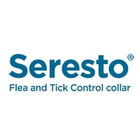
Introduction
If you’re a cat lover who struggles with allergies, you’re not alone. Cat allergens are one of the most common triggers of indoor allergies, affecting millions of pet owners worldwide. The good news is that you don’t have to choose between your health and your feline friend. With a few simple lifestyle adjustments and cleaning habits, you can reduce cat allergens in your home, breathe more easily, and keep your cat happy and healthy.
In this guide, we’ll explore what cat allergens are, why they cause allergic reactions, and practical ways to manage them effectively.
What Are Cat Allergens?
Cat allergens are tiny protein particles found in a cat’s saliva, dander (dead skin flakes), and urine. The main culprit is a protein called Fel d 1, which is produced by a cat’s sebaceous glands and saliva. When cats groom themselves, the saliva containing this protein spreads onto their fur and skin. Once the saliva dries, microscopic particles become airborne and stick to surfaces such as carpets, furniture, bedding, and clothing.
Because these particles are so lightweight, they can remain suspended in the air for hours, making them easy to inhale and difficult to eliminate from the air. Even homes without cats can have traces of cat allergens if visitors have been in contact with cats elsewhere.
Recognizing Cat Allergy Symptoms
Common cat allergy symptoms include:
- Sneezing and a runny nose
- Itchy, watery eyes
- Nasal congestion
- Skin rashes or itching after petting a cat
- Wheezing or difficulty breathing in severe cases
If you or a family member experiences these symptoms around cats, it’s likely due to Fel d 1 allergens. However, before making assumptions, consult a doctor or allergist for a proper diagnosis and advice.
1. Groom Your Cat Regularly
Regular grooming is one of the most effective ways to reduce allergens. Brushing your cat daily helps remove loose fur and dander before they spread around your home. Use a grooming brush specifically designed to reduce shedding. If possible, groom your cat outdoors or in a well-ventilated area.
Bathing your cat occasionally with vet-approved hypoallergenic shampoo can also help reduce the amount of Fel d 1 protein on their fur. However, not all cats enjoy baths, so introduce this gradually and consult your veterinarian for safe grooming products.
2. Clean Your Home Frequently
Allergens can accumulate quickly, so regular cleaning is key.
Here’s what you can do:
- Vacuum with a HEPA filter: Standard vacuums may blow allergens back into the air. A HEPA-filter vacuum traps tiny particles more effectively.
- Dust with damp cloths: Dry dusting spreads allergens into the air; a damp cloth traps them instead.
- Wash bedding weekly: Launder your cat’s bed, blankets, and toys frequently in hot water.
- Steam clean carpets and upholstery: This helps eliminate allergens that are trapped deep within the fabric fibers.
Consistent cleaning not only reduces allergens but also creates a healthier home environment for both you and your pet.
3. Create Cat-Free Zones
Establishing certain areas in your home as “cat-free” can significantly reduce allergen exposure. The bedroom should be your top priority since it’s where you spend the most time. Use HEPA air purifiers in these rooms to continuously filter allergens out of the air. Keep doors closed and wash bedding often to maintain a clean space.
Provide your cat with their own cozy area elsewhere in the house, complete with comfortable bedding, toys, and scratching posts.
4. Improve Air Quality
Proper airflow is essential for reducing the presence of allergens in the air. Keep your home well-ventilated by opening windows frequently to let in fresh air. Using air purifiers with HEPA filters can help capture allergens, dust, and pollen. If your home is humid, a dehumidifier can also help by minimizing moisture that allows allergens to linger longer.
5. Use Allergen-Reducing Products
Some specialized products are designed to minimize cat allergens:
- Allergen-reducing sprays can be applied to furniture, carpets, and fabrics to neutralize Fel d 1 protein.
- Allergen-control cat food (like Purina’s Pro Plan LiveClear) helps reduce allergens at the source by neutralizing Fel d 1 in your cat’s saliva.
- Pet wipes are a quick way to remove loose dander from your cat’s coat between baths.
Always consult your vet before changing your cat’s diet or using new grooming products.
6. Wash Your Hands After Handling Your Cat
It’s easy to transfer allergens from your cat’s fur to your face or clothing without realizing it. Make it a habit to wash your hands thoroughly after petting or playing with your cat. Avoid touching your face, eyes, or nose until you have washed up.
If you have children at home, teach them these habits early to help minimize exposure to allergens.
7. Manage Fabrics and Furniture
Items like carpets, curtains, and upholstered furniture tend to collect and hold onto allergens easily.
Here’s how to manage them:
- Whenever possible, replace carpets with hard flooring options, such as wood or tile.
- Opt for leather or vinyl furniture rather than fabric upholstery to make cleaning easier and reduce allergen buildup.
- Wash curtains and cushion covers frequently in hot water.
- Use washable slipcovers to make cleaning easier.
These changes can drastically reduce the number of allergens that linger indoors.
8. Seek Medical Advice
If your allergy symptoms persist despite taking preventive measures, it’s necessary to consult a medical professional. They may suggest allergy medications, nasal sprays, or immunotherapy (allergy shots) to help your body gradually develop tolerance to the allergen. Your veterinarian will guide you on the most suitable treatment based on the severity of your symptoms.
9. Keep Your Cat Healthy
A healthy cat sheds fewer allergens. Feed your cat high-quality food rich in omega-3 fatty acids and essential nutrients for skin and coat health. Regular vet check-ups ensure that your cat is not suffering from dry skin, dandruff, or other conditions that may increase shedding and allergen spread.
The Bottom Line
Living with a cat while managing allergies is entirely possible. The key lies in consistent grooming, regular cleaning, and smart home management. By making a few adjustments — from using HEPA filters and allergen-reducing products to creating cat-free zones — you can minimize allergens and enjoy the company of your furry companion comfortably.
A clean, well-maintained home not only helps control allergies but also contributes to a happier, healthier environment for everyone — including your beloved cat.






